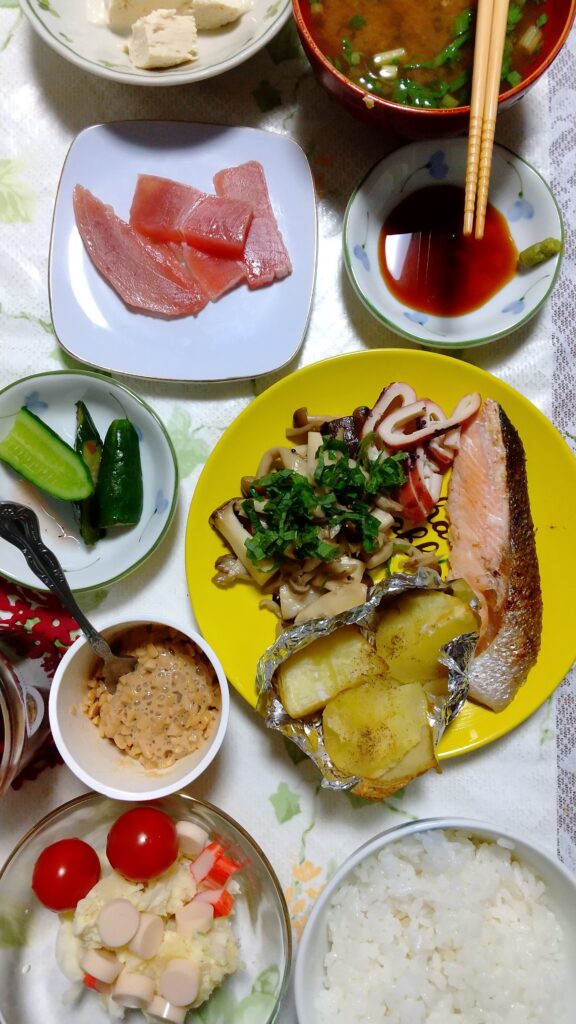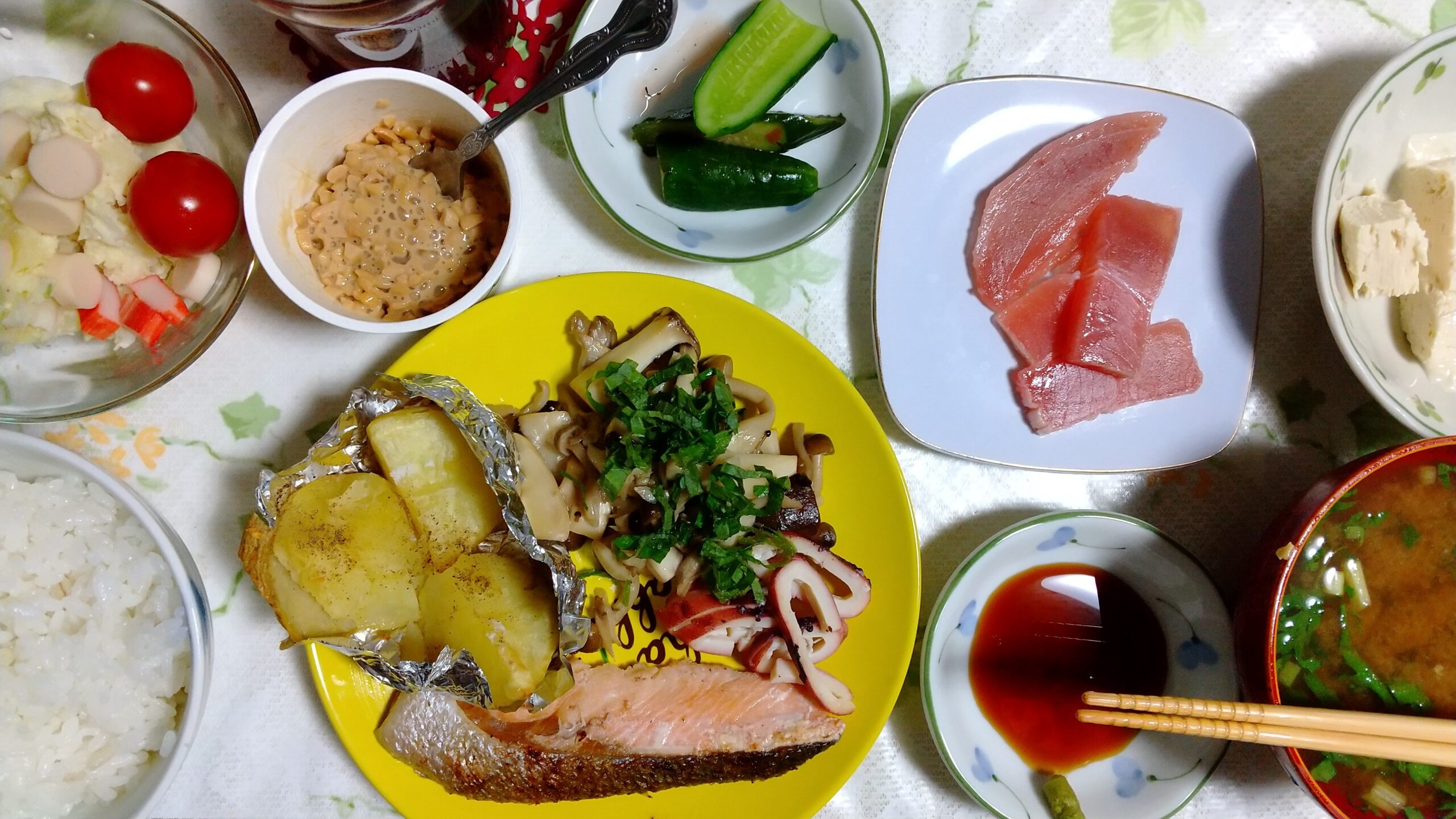
- ご飯
- 味噌汁
- 豆腐
- マグロの刺身
- わさび醤油
- ピリ辛キュウリ
- 焼き鮭
- 茹でイカ
- じゃがバター
- キノコのマリネ
- ひきわり納豆
- ポテトサラダ
Rice
miso soup
tofu
Tuna sashimi
Wasabi soy sauce
Spicy cucumber
Grilled salmon
Boiled squid
Jaga(poteto) butter
Marinated mushrooms
Hikiwari Natto
potato salad
暑い日は塩気のある食べ物が恋しくなりますよね。日本食は健康的なメニューというイメージがありますが、塩分が多いです。もちろんバランス良く栄養素が取れる献立が多いです。しかし、塩分摂取量の世界的な目安が6gに対して、平均的に味噌汁一杯で2g、焼き鮭で2gとそれだけで1日の目安の半分以上を摂取。さらにこの日のメニューだとひきわり納豆のタレ、わさび醤油、じゃがバター、ポテトサラダのマヨネーズの中にも塩分が含まれています。この辺りは調理過程で省くこともできますので、塩分過多にならないよう塩のg数を減らしたり減塩調味料を使い、気をつけて調理を出来ますが元々の日本食が塩気のある食事です。過ごしやすい気候の時には不向きですが、こんなに連日猛暑の時はむしろ丁度いいと思います。何故なら1L汗をかけば塩分が3gほど失われるからです。沢山汗をかいた日はぜひ日本食をお召し上がりくださいませ。
I miss salty food on hot days. Japanese food has the image of a healthy menu, but it has a lot of salt. Of course, there are many menus that allow you to get nutrients in a balanced way. However, although the world standard for salt intake is 6g, the average intake is 2g of miso soup and 2g of grilled salmon, which is more than half of the daily standard. In addition, the menu on the day includes salt, wasabi soy sauce, potato butter, and mayonnaise of potato salad in the natto sauce. This part can be omitted during cooking, so you can reduce the number of grams of salt, use low-salt seasonings to prevent excess salt, and cook carefully, but the original Japanese food is a salty meal. It’s not suitable for a pleasant climate, but I think it’s a little over 35 degrees Celsius every day. This is because about 3g of salt is lost when you sweat 1L. Enjoy Japanese food on a sweaty day.




コメント